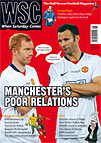 Australia's bid to host the World Cup in 2022 has encountered unprecedented problems, says Mike Ticher
Australia's bid to host the World Cup in 2022 has encountered unprecedented problems, says Mike Ticher
If logic counts for anything on FIFA’s executive committee, Australia will host the 2022 World Cup. It is the obvious candidate on FIFA’s past form, if not its explicit criteria. It has only one serious rival, a fact so far obscured in most of the coverage of its bid. If it does win, it will reinforce the genuinely global nature of the competition; if not, there may be only half a dozen countries outside Europe that can host it in future.
Let’s start with what we know. The 2018 and 2022 tournaments must be in different confederations. One will be Europe, and we can almost as safely guess this will be 2018, since by then Europe will not have hosted for 12 years, already an unprecedented gap. Therefore talk of England, Spain or Russia as Australia’s rivals can be dismissed.
Rather, they are up against a much weaker field for 2022: the non-European countries that have nominated are the US, Mexico, Japan, Korea, Indonesia and Qatar. The latter two are hardly serious candidates; Japan and South Korea perhaps hope everyone has forgotten 2002; Mexico cannot be ruled out, but it seems unlikely they would get a third go (something no country has had) if there was an attractive alternative.That leaves the US, also hosts within recent memory, but who will make a persuasive case that their stadiums, national team, domestic league and general football awareness have improved dramatically since 1994.
As with the US in that first run, Australia has novelty in its favour. FIFA would be planting its flag again in uncharted, but potentially fertile, territory. After two “traditional’’ hosts in South America and Europe, it should be ready to experiment with a less developed football region again. As the chairman of Football Federation Australia, Frank Lowy, put it at last month’s bid launch: “The World Cup in Europe is like putting a cherry on top of a gigantic chocolate cake.’’ (He didn’t explain what that made Australia a modest vanilla slice perhaps, or a cheerful tray of lamingtons.)
Obviously it will need more than cheeky freshness and cake-related metaphors to convince FIFA of Australia’s suitability. So far the only concrete evidence of its bid is a lame slogan (“Come play!’’) and a website promoting Melbourne’s “passionate cafe culture’’ and the charms of the other state capitals.
But its broadbrush vision has a lot going for it, as Lowy persuasively outlined: proximity to the tournament’s biggest TV market, Asia; solid political support; Australia’s intense sporting culture and fondness for big events; the emergence of the Socceroos as a credible force; and the successful establishment of its national league.
Some of the details look a lot more shaky, especially on transport and stadiums. FIFA require 12 that hold 45,000, including two of 80,000. Right now Australia could just about put up one adequate large one (Sydney’s unloved Olympic stadium) and two small (Brisbane’s Lang Park and the Sydney Football Stadium). One more is under construction in Melbourne.
After that things get tricky. The MCG is certain to be nominated. It’s a great ground, but not for football, only a pitiful few rows of seats are within the recommended viewing distance. The same goes for Sydney’s monster (though it may have reconfiguration options) and any other stadium also used for Australian rules. Perth and Adelaide are particular problems, with lukewarm state governments trapped between the unpalatable alternatives of adapting manifestly unsuitable ovals or building 40,000-plus rectangular stadiums with no sensible later use. The A-League clubs in both cities average barely 10,000. “Legacy’’ debacles on the scale of Portugal and Korea loom large.
In the eastern states, too, there would be hard questions about potential venues on grounds of distance (Townsville) and wintry weather (Canberra), even before wrangling over stadiums began. No country with such a small population (21 million) has hosted since Chile in 1962, and certainly never one with such sparseness between its population centres.
But if a country as rich and enthusiastic as Australia cannot find a way to overcome those doubts, FIFA’s bloated requirements would have to take some blame. It should be flexible enough to make World Cups work not only in Australia but also north Africa, China, the medium-sized South American nations and, one day, the Middle East or south-east Asia. The 2022 choice may decide whether that is realistic.
Australia should not even need to rely on that. On cold logic alone FIFA might decide that a country surviving the global financial crisis in relatively good shape was a safer bet than one still gasping for air. And that Australians would put their other sports on hold for a month to embrace the World Cup in a way America never would.
But logic and flexibility haven’t always been its strong points.
From WSC 270 August 2009